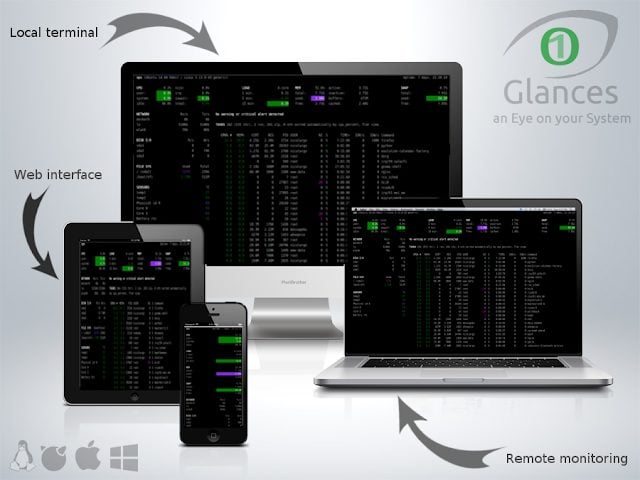No products in the cart.

Glances is a cross-platform monitoring tool that aims to present a large amount of monitoring information through a curse or Web-based interface. The information dynamically adapts depending on the size of the user interface. It can also work in client/server mode. Remote monitoring could be done via terminal, Web interface or API (XML-RPC and RESTful). Stats can also be exported to files or external time/value databases. Glances is written in Python and use libraries to grab information from your system. It is based on an open architecture where developers can add new plugins or export modules. Social networks Requirements python>=2.7 or python>=3.4 psutil>=5.3.0 (better with the latest version) defusedxml (in order to monkey patch xmlrpc) future (for Python 2 support) Note for Python 2.6 users Glances no longer supports Python 2.6. Please upgrade to a minimum Python version of 2.7/3.4+ or downgrade to Glances 2.6.2 (the last version with Python....
A very big thanks to kelvinethicalhacker at gmail com for the great the work you done for me, i got the email address on the net web when i needed to hack my husband cell phone he helped me within few hours with whatsApp hacking and GPS location tracking direct from my person phone i know how my husband walks, thanks for the helped you do for me for every grateful for your helped, you can contact him through gmail via kelvinethicalhacker at gmail.com or Telegram, calls, text, number +1(341)465-4599, if you are in needed of hacking services, contact him.
A great hacker is really worthy of good recommendation , Henry
really help to get all the evidence i needed against my husband and
and i was able to confront him with this details from this great hacker
to get an amazing service done with the help ,he is good with what he does and the charges are affordable, I think all I owe him is publicity for a great work done via, Henryclarkethicalhacker at gmail com, and you can text, call him on whatsapp him on +12014305865, or +17736092741,